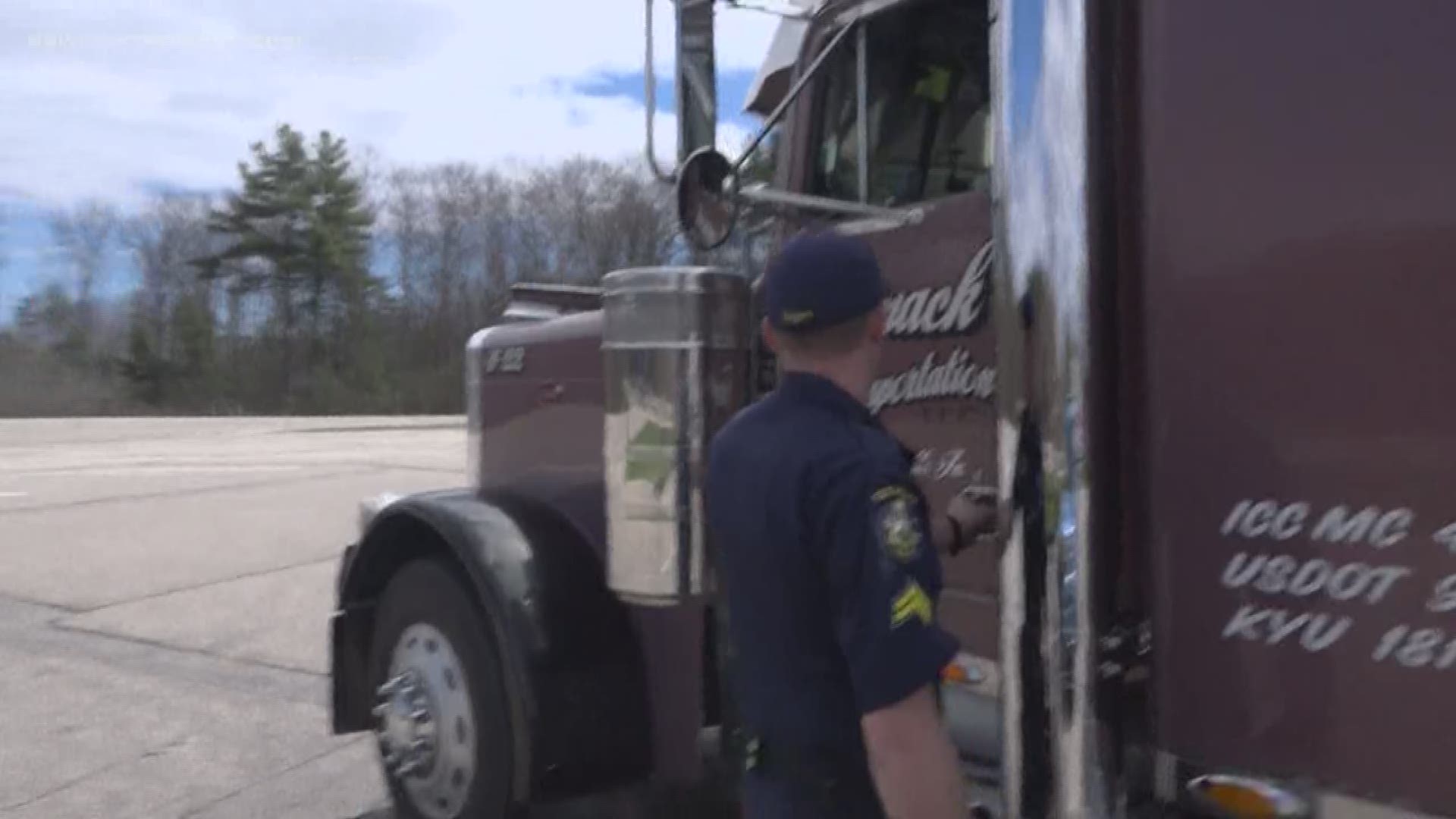KITTERY, Maine — On any given day, you can find members of the Maine State Police Commercial Vehicle Inspection unit at a number of inspection sites across the state.
It's their job to check over some of the largest vehicles travelling on Maine's highways.
"How are you doing today, sir?" Cpl. Chris Rogers asked a truck driver Thursday afternoon at the inspection station in Kittery. "Where are you headed today?"
Rogers and others spend hours talking to truck drivers, combing over their vehicles to make sure it's up to code and doesn't present any dangers to other drivers or themselves.
There are three levels of inspections, one through three -- three being the most basic check and one being the works. All of them are important.
After seeing the truck at a glance, Rogers decided to perform a full level one inspection. He first asked for the basics, like the trucker's driver's license and travel log. He continued on to check the truck's blinkers, break lights, and other minor yet crucial functions of the vehicle.
"Now I'm going to take a full walk around the truck," Rogers said.
He looked at every tire, checking the air pressure and hub caps -- measured the truck's breaks and checked different wiring. He even went as far as checking under the vehicle, looking for any leaks or extra fluids.
"A big concern for me would be a build up of debris around their brake system, not allowing it to work correctly," Rogers said. "Safety is our number one priority."
That priority is no secret. In fact, roughly 10-billion dollars was spent last year nationwide on trucker safety, according to the Vice President of Maine Motor Transport, Tim Doyle.
"Every day is not only about getting our loads delivered safely," Doyle said. "But it's the safety of those professional drivers and those we share the road with that is most important."
After going over the truck with a fine-tooth comb, Rogers found it to be up to code, but there was one problem -- the driver's travel log was not valid.
"He is going to have to park his truck and stay off the road for 10 hours," Rogers said. "That's the required time to catch up on sleep."
Once Rogers was done logging his inspection, the truck was towed to another lot to make room for the next truck to be checked over. It's a tedious task, but an important process that is essential to keep our highways safe.

